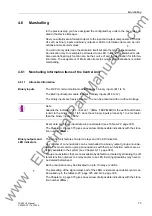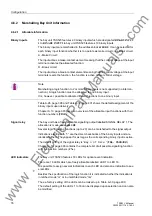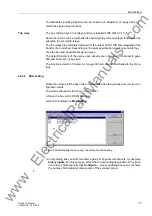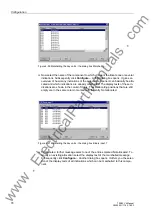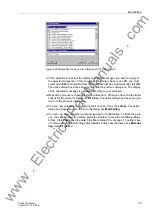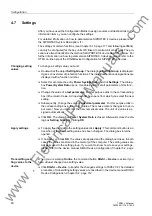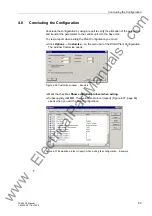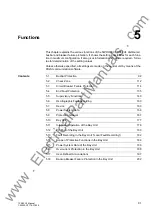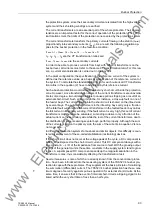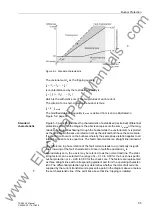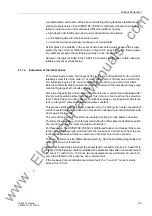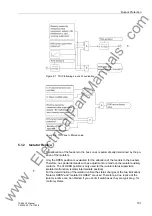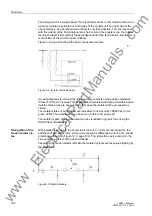
Settings
87
7SS52 V4 Manual
C53000-G1176-C182-3
If the time synchronization is to be accomplished via the control center, the option
IEC 60870-5-103
or
NTP (IEC 61850)
must be selected (Figure 4-35, page 86).
For the operating modes with time signal (radio clock) you must observe that it may
take up to 3 minutes after the start or return of the reception until the received time has
been safely decoded. Only then will the internal clock management be synchronized.
For the time signal IRIG B the year must be set manually as this standard does not
include a year number.
If the synchronization takes place by external pulse via binary input: From 30 seconds
on the time will be rounded up to zero of the next minute when the positive pulse edge
arrives. If the seconds have not yet reached 30, they are rounded off to zero of the
previous minute. The signal is not monitored, each pulse takes immediate effect on
the clock management.
Synchronization
offset
The parameter
Synchronization offset
(
Offset to time signal
) can be used to adapt
the synchronization time delivered by the radio clock receiver to the local time (time
zone). The adjustable maximum offset is:
±
23 h 59 min =
±
1439 min.
Fault indication af-
ter tolerance time
The tolerance time for faults (
Fault indication after
) indicates how long a cyclic syn-
chronization may be missing until the time is considered faulted.
An external or internal synchronization is usually performed in minute intervals. (The
synchronization by external pulse via binary input is an exception. Its pulse may arrive
in intervals of several minutes). Therefore, this parameter must always be at least 2
minutes. If the conditions for reception are unfavourable for the radio clock, the tran-
sition to the state “error” can be further delayed.
Changing the
operating mode
When changing the operating mode, the corresponding hardware will switch to the
other synchronization source after one second at latest. The cyclic synchronization is
thus first interrupted and the clock is considered faulted, as is the case for a start, until
the new synchronization source takes effect.
If the synchronization offset is changed in the operating modes with time signal and if
the year is changed in the operating mode IRIG B, the cyclic synchronization will not
be lost but a time step will occur. When the offset is changed to the "switching" minute,
the time value is displayed with "
Clock SyncError on
” without the synchronization
offset and afterwards with "
Clock SyncError off
” with the synchronization offset.
Note
If you have by mistake entered a year smaller than “1991” for IRIG B, the year will be
set to “1991” during the first synchronization.
www
. ElectricalPartManuals
. com

